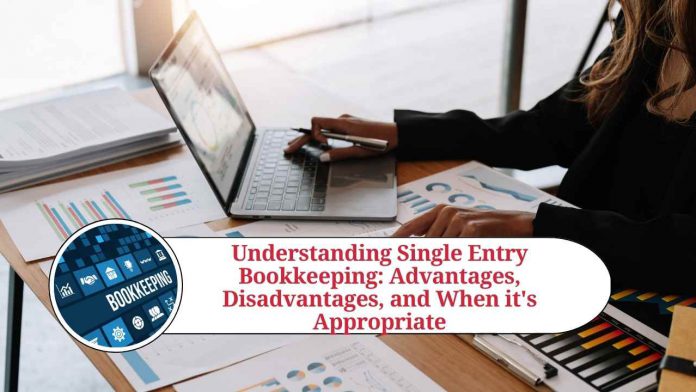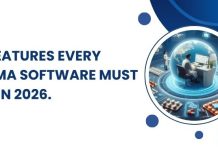Single Entry Mode: What Is It and When Is It Applicable?
Single Entry Mode is a method of accounting where transactions are recorded only once, either as income or expenses. It is a simplified accounting system that does not involve double entry bookkeeping. In this blog, we will discuss the advantages and disadvantages of single entry mode, as well as the industries and situations where it is applicable.
Advantages of Single Entry Mode
- Simplicity: Single Entry Mode is easy to understand and implement. It is ideal for small businesses that do not have a dedicated accounting department.
- Cost-effective: Single Entry Mode requires less time and effort to maintain records, which reduces the cost of accounting.
- Flexibility: Single Entry Mode allows for flexibility in record keeping. It is easier to add or delete records as required.
- Time-saving: Since only one record is maintained, it saves time and avoids duplication of work.
Disadvantages of Single Entry Mode
- Limited information: Single Entry Mode does not provide a complete picture of the financial position of a company. It only provides basic information such as income and expenses.
- Prone to errors: Since Single Entry Mode is manual, it is more prone to errors than double-entry bookkeeping.
- Limited scalability: Single Entry Mode is not suitable for large businesses with complex financial transactions.
Industries and Situations Where Single Entry Mode Is Applicable
- Small businesses: Single Entry Mode is ideal for small businesses that do not have complex financial transactions.
- Freelancers: Freelancers who have a limited number of clients and a simple business structure can use Single Entry Mode.
- Service-based businesses: Service-based businesses that do not have a large inventory or assets can use Single Entry Mode.
- Non-profit organizations: Non-profit organizations that have a simple financial structure can use Single Entry Mode.
Advantages of Single Entry Mode in Detail
- Simplicity: Single Entry Mode is a simple method of accounting. It does not require complex knowledge of accounting principles, making it easy to understand and implement. Single Entry Mode only requires a record of all income and expenses, which can be easily done using spreadsheets or accounting software. This makes it ideal for small businesses that do not have a dedicated accounting department.
- Cost-effective: Single Entry Mode requires less time and effort to maintain records, which reduces the cost of accounting. It also does not require hiring an accountant or bookkeeper to maintain the records. This saves costs for small businesses and freelancers who do not have a large budget for accounting services.
- Flexibility: Single Entry Mode allows for flexibility in record keeping. It is easier to add or delete records as required. This means that businesses can adapt quickly to changes in their financial position, such as a sudden increase or decrease in income or expenses. Single Entry Mode also allows businesses to choose which transactions to record, depending on their significance.
- Time-saving: Since only one record is maintained in Single Entry Mode, it saves time and avoids duplication of work. It also reduces the time required to prepare financial statements. This is beneficial for small businesses and freelancers who have limited time and resources.
Disadvantages of Single Entry Mode in Detail
- Limited information: Single Entry Mode does not provide a complete picture of the financial position of a company. It only provides basic information such as income and expenses. It does not provide information about assets, liabilities, and equity. This makes it difficult to make informed decisions about the financial health of the business.
- Prone to errors: Since Single Entry Mode is manual, it is more prone to errors than double-entry bookkeeping. Errors can occur when recording transactions or when reconciling accounts. This can result in inaccurate financial statements, which can lead to poor decision-making.
- Limited scalability: Single Entry Mode is not suitable for large businesses with complex financial transactions. It can become difficult to maintain accurate records as the number of transactions increases. This can result in errors and can make it difficult to prepare financial statements.
Industries and Situations Where Single Entry Mode Is Applicable in Detail
- Small businesses: Single Entry Mode is ideal for small businesses that do not have complex financial transactions. Small businesses typically have fewer transactions, making it easier to maintain accurate records using Single Entry Mode.
- Freelancers: Freelancers who have a limited number of clients and a simple business structure can use Single Entry Mode. Since freelancers typically have a low volume of transactions, Single Entry Mode is an efficient and cost-effective method of accounting for them.
- Service-based businesses: Service-based businesses that do not have a large inventory or assets can use Single Entry Mode. Service-based businesses typically have a low volume of transactions, making Single Entry Mode an efficient and cost-effective method of accounting for them.
- Non-profit organizations: Non-profit organizations that have a simple financial structure can use Single Entry Mode. Since non-profit organizations typically have a low volume of transactions, Single Entry Mode is an efficient and cost-effective method of accounting for them.
Conclusion
Single Entry Mode is a simplified accounting system that is easy to understand and implement. It is cost-effective, flexible, and time-saving. However, it is not suitable for businesses with complex financial transactions, as it provides limited information and is prone to errors. Single Entry Mode is applicable to small businesses, freelancers, service-based businesses, and non-profit organizations with a simple financial structure. It is important for businesses to evaluate their financial needs and choose the accounting method that best meets their needs.
Read more useful content:
Frequently Asked Questions (FAQs)
What is the difference between accounting and bookkeeping?
Accounting and bookkeeping are closely related, but bookkeeping refers to the process of recording financial transactions, while accounting involves analyzing and interpreting that financial data.
What is double-entry bookkeeping?
Double-entry bookkeeping is a system in which every financial transaction is recorded in two accounts – one account is debited and the other is credited. This ensures that the accounting equation (Assets = Liabilities + Equity) remains in balance.
What is the difference between cash basis and accrual basis accounting?
Cash basis accounting records income and expenses when cash is received or paid out, while accrual basis accounting records income and expenses when they are earned or incurred, regardless of when cash is exchanged.
Do I need to hire an accountant or bookkeeper for my small business?
It depends on the complexity of your financial transactions and your own accounting knowledge. If you have a simple business structure and only a few transactions, you may be able to handle bookkeeping on your own. However, if you have complex financial transactions or you lack accounting knowledge, it may be beneficial to hire a professional.
What are some common financial statements?
Some common financial statements include the income statement, balance sheet, and statement of cash flows.
What is the difference between revenue and profit?
Revenue is the total amount of money earned from sales, while profit is the revenue minus all expenses.
What are some common bookkeeping software programs?
Some common bookkeeping software programs include QuickBooks, Xero, and FreshBooks.
What is a chart of accounts?
A chart of accounts is a list of all the accounts used by a business to record financial transactions. It helps to organize and track the flow of money through the business.
What is the purpose of an audit?
An audit is an independent review of a company’s financial records to ensure that they are accurate and comply with accounting standards.
What is a tax deduction?
A tax deduction is an expense that can be subtracted from a person’s taxable income to reduce the amount of taxes owed. Some common tax deductions for businesses include expenses related to employee wages, rent, and supplies.




















